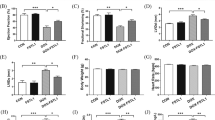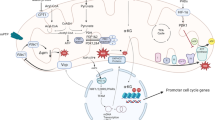Abstract
Protection of the ex vivo rat heart from ischemia/reperfusion injury can be provided by ischemic preconditioning (IPC). Previous studies revealed that a complex of pannexin-1 with the P2X7 receptor forms a channel during IPC that results in the release of cardioprotectants such as adenosine and sphingosine 1-phosphate (S1P) that bind to G-protein-coupled cell surface receptors triggering cardioprotective cell signaling pathways. Antagonists of both pannexin-1 (carbenoxolone and mefloquine) and P2X7 receptors (brilliant blue G) are known to block IPC when administered at the time of preconditioning (Vessey et al. J Cardiovasc Pharmacol Ther 15:190, 2010). We now demonstrate that these same antagonists also block the cardioprotective effects of IPC when added after the index ischemia during full reperfusion. Likewise, addition at full reperfusion of binding antagonists to the endogenous cardioprotectants S1P (VPC) or adenosine (8-SPT) reduced the effectiveness of IPC. These data suggest that IPC has a component that requires the release of cardioprotectants via pannexin-1/P2X7 channels not only during preconditioning phase but again during the early stages of reperfusion following the index ischemia. It was found that the level of cardioprotectant release required at reperfusion to achieve cardioprotection was lower when hearts had been preconditioned. Further, pharmacologic preconditioning with S1P or adenosine was also blocked at reperfusion by antagonists of the pannexin-1/P2X7 channels indicating that pharmacologic preconditioning also requires opening of the channel at full reperfusion. In untreated hearts, key components of the PI3 kinase/Akt signaling pathway were revealed by western analysis to be lost during ischemia. This correlates with an inability to generate phospho-Akt at reperfusion. IPC prevents this loss and thereby primes the cell for response to cardioprotectants released at full reperfusion.




Similar content being viewed by others
References
Jennings RB, Reimer KA (1991) The cell biology of acute myocardial ischemia. Ann Rev Med 42:225–246
Vessey DA, Li L, Honbo N, Karliner JS (2009) Sphingosine 1-phosphate is an important endogenous cardioprotectant released by ischemic pre- and postconditioning. Am J Physiol Heart Circ Physiol 297:H1429–H1435
Buja LM, Entman ML (1998) Modes of myocardial cell injury and cell death in ischemic heart disease. Circulation 98:1355–1357
Hansen PR (1995) Myocardial reperfusion injury: experimental evidence and clinical relevance. Eur Heart J 16:734–740
Maxwell SR, Lip GY (1997) Reperfusion injury: a review of the pathophysiology, clinical manifestations and therapeutic options. Int J Cardiol 58:95–117
Vessey DA, Li L, Kelley M, Karliner JS (2008) Combined sphingosine, S1P and ischemic postconditioning rescue the heart after protracted ischemia. Biochem Biophys Res Commun 375:425–429
Zhao ZQ, Vinten-Johansen J (2002) Myocardial apoptosis and ischemic preconditioning. Cardiovasc Res 55:438–455
Gill C, Mestril R, Samali A (2002) Losing heart: the role of apoptosis in heart disease–a novel therapeutic target? FASEB J 16:135–146
Murry CE, Richard VJ, Reimer KA, Jennings RB (1990) Ischemic preconditioning slows energy metabolism and delays ultrastructural damage during a sustained ischemic episode. Circ Res 66:913–931
Deutsch E, Berger M, Kussmaul WG, Hirshfeld JW, Hermann HC, Laskey WK (1990) Adaptation to ischemia during percutaneous transluminal coronary angioplasty: clinical hemodynamic, and metabolic features. Circulation 82:2044–2051
Gross ER, Gross GJ (2006) Ligand triggers of classical preconditioning and postconditioning. Cardiovasc Res 70:212–221
Hausenloy DJ, Tsang A, Yellon DM (2004) The reperfusion injury salvage kinase pathway: a common target for both ischemic preconditioning and postconditioning. Trends Cardiovasc Med 15:69–75
Murphy E, Steenbergen C (2008) Mechanisms underlying acute protection from cardiac ischemia–reperfusion injury. Physiol Rev 88:581–609
Vessey DA, Li L, Kelley M (2010) Pannexin-1/P2X7 purinergic receptor channels mediate the release of cardioprotectants induced by ischemic pre- and postconditioning. J Cardiovasc Pharmacol Ther 15:190–195
Vessey D, Kelley M, Li L, Huang Y, Zhou H-Z, Zhu BQ, Karliner JS (2006) Role of sphingosine kinase activity in protection of heart against ischemia reperfusion injury. Med Sci Monit 12:BR318–BR324
Vessey DA, Kelley M, Zhang J, Li L, Tao R, Karliner JS (2007) Dimethylsphingosine and FTY720 inhibit the SK1 form but activate the SK2 form of sphingosine kinase from rat heart. J Biochem Mol Toxicol 21:273–279
Vessey DA, Kelley M, Li L, Huang Y (2009) Sphingosine protects aging hearts from ischemia/reperfusion injury. Superiority to sphingosine 1-phosphate and ischemic pre- and post-conditioning. Oxid Med Cell Longev 2:146–151
Locovei S, Scemes E, Qiu F, Spray DC, Dahl G (2007) Pannexin1 is part of the pore forming unit of the P2X7 receptor death complex. FEBS Lett 581:483–488
Qui F, Dahl G (2008) A permeant regulating its permeation pore: inhibition of pannexin 1 channels by ATP. Am J Physiol 296:C250–C255
Oudit GY, Penninger JM (2009) Cardiac regulation by phosphoinositide 3-kinases and PTEN. Cardiovasc Res 82:250–260
Vessey DA, Li L, Kelley M, Karliner JS (2008) Sphingosine can pre- and post-condition heart and utilizes a different mechanism from sphingosine 1-phosphate. J Biochem Mol Toxicol 22:113–118
Cohen MV, Downey JM (2007) Adenosine: trigger and mediator of cardioprotection. Basic Res Cardiol 103:203–215
Song G, Ouyang G, Bao S (2005) The activation of Akt/PKB signaling pathway and cell survival. J Cell Mol Med 9:59–71
Hausenloy DJ, Tsang A, Mocanu MM, Yellon DM (2005) Ischemic preconditioning protects by activating prosurvival kinases at reperfusion. Am J Physiol Heart Circ Physiol 288:H971–H976
Solenkova NV, Solodushko V, Cohen MV, Downey JM (2006) Endogenous adenosine protects preconditioned heart during early minutes of reperfusion by activating Akt. Am J Physiol Heart Circ Physiol 290:H441–H449
Harrison GJ, Willis RJ, Headrick JP (1998) Extracellular adenosine levels and cellular energy metabolism in ischemically preconditioned rat heart. Cardiovasc Res 40:74–87
Zhao Z-Q, Vinten-Johansen J (2006) Postconditioning: reduction of reperfusion-induced injury. Cardiovasc Res 70:200–211
Kuno A, Critz SD, Cui L, Solodushko V, Yang X-M, Krahn T, Albrecht B et al (2007) Protein kinase C protects preconditioned rabbit hearts by increasing sensitivity of adenosine A2b-dependent signaling during early reperfusion. J Mol Cell Cardiol 43:262–271
Acknowledgments
This work was supported by a grant from the Medical Service of the Department of Veterans Affairs (DAV). The authors thank Norm Honbo for assistance in the preparation of the figures.
Author information
Authors and Affiliations
Corresponding author
Rights and permissions
About this article
Cite this article
Vessey, D.A., Li, L. & Kelley, M. Ischemic preconditioning requires opening of pannexin-1/P2X7 channels not only during preconditioning but again after index ischemia at full reperfusion. Mol Cell Biochem 351, 77–84 (2011). https://doi.org/10.1007/s11010-011-0713-9
Received:
Accepted:
Published:
Issue Date:
DOI: https://doi.org/10.1007/s11010-011-0713-9




